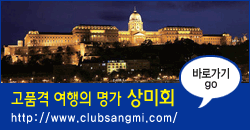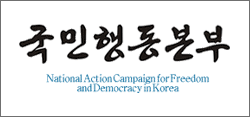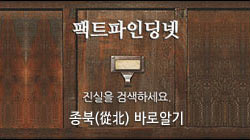노르웨이는 싸움꾼 덴마크와 장사꾼 스웨덴 사이에 끼여 氣를 제대로 펴 보지 못한 순박한 동생格이다. 덴마크 밑에서 400여 년, 스웨덴 밑에서 90여 년을 굽히고 살았다. 2차 대전 때는 독일한테 당하였다. 하늘이 이런 노르웨이에 축복을 내린 것은 20세기 후반이다. 1969년 北海의 노르웨이 水域 안에서 거대한 유전이 발견된 것이다. 척박한 고향을 떠나 해적질을 하면서 세계를 떠돌아 다녀야 했던 나라, 本土 인구만한 이민자가 미국으로 건너간 나라가 축복 받은 땅으로 변한 것이다.
노르웨이는 석유수출 세계 5위, 가스수출 세계 3위이다. 國內총생산의 약20%가 석유수입이다. 노르웨이는 석유수입금을 잘 관리한다. 석유수입을 국민年金기금화하였는데, 작년 11월 현재 4550억 달러이다. 아부다비 基金에 이어 세계 2위이다. 앞으로 10년 안에 1조 달러에 달하고 결국은 세계최대의 基金이 될 것이다.
노르웨이 사람은 머리 좋고 체력 좋은 사람이 부지런하고 마음도 좋은 경우이다. 석유수입이 이 정도이면 서비스業에 종사하는 사람이 많아지고 1, 2차 산업은 기피하게 되는데 노르웨이는 그렇지 않다. 노르웨이는 중국에 이어 세계 제2위의 海産物 수출국이고, 세계 6위의 商船隊를 갖고 있다. 잘 사는 민족이 가장 먼저 버리는 게 水産, 海運인데 노르웨이는 바다를 떠나지 않는다. 1000년 전의 바이킹 시절부터 변하지 않는 게 있다면 이들의 海洋정신이다.
노르웨이는 깊은 계곡이 많아 전체 電力의 약98%를 水力발전으로 충당한다. 그러니 석유를 많이 수출할 수 있는 것이다. 上場된 회사 주식의 약30%를 국가가 보유한다. 석유, 통신, 은행, 알루미늄 산업은 國營이다.
의료비는 전액 무료이다. 出産휴가는 父母가 다 받는데 1년이다. 이 정도이면 놀고 먹자는 사람들이 많아 실업률이 높을 것 같지만 이 나라는 유럽에서 가장 낮은 축이다. 1~3%이다. 노르웨이는 1인당 GDP가 약10만 달러로서 룩셈부르크에 이어 세계2위이지만 1인당 資産 보유액은 세계1위이다. 쉽게 말하면 세계 최고의 부자들이란 뜻이다. 작년 초엔 인구가 두 배인 스웨덴보다 GDP가 많아졌다.
1인당 GDP뿐 아니라 삶의 질, 평화지수, 자유지수, 국가운영 성적 등 거의 모든 국제통계에서 노르웨이는 최상위권이다. 작년 미국의 폴린 폴리시가 등수를 매긴 '성공-실패국가 랭킹'에서 노르웨이는 1등이었다.
이런 노르웨이가 아직 국민皆兵制를 유지한다. 상비군은 2만3000명, 동원가능 예비군까지 합치면 8만3000명이다. 복무기간은 6~12개월이다. NATO(북대서양조약기구) 창설국이기도 하다.
노르웨이는 물가가 비싸다. 미국보다 약30% 높다. 임금은 職種이나 남녀간 차이가 매우 작다. 청소부, 간호사, 정부 고위관리, 대학교수의 월급이 거의 같다. 2008년 세계를 휩쓴 금융위기에 전혀 영향을 받지 않은 유일한 나라가 노르웨이이다. 인류역사가 만들어낸 最高의 선진국이 노르웨이인 셈이다. 이 노르웨이가 1000년 전엔 유럽에서 가장 야만적인 種族이었다. 11세기 무렵까지 殉葬을 하였다. 17세기엔 인구의 10%가 굶어죽는 대기근을 여러 차례 겪었다. 역사는 모르는 구석이 많다.
,,,,,,,,,,,,,,,,,,,,,,,,,,,,,,,,,,,,,,,,,,,,,,,,
Economy
Main articles: Economy of Norway, Energy in Norway, and European Economic Area
GDP and GDP growthNorwegians enjoy the second highest GDP per-capita (after Luxembourg) and third highest GDP (PPP) per-capita in the world. Norway maintained first place in the world in the UNDP Human Development Index (HDI) for six consecutive years (2001?),[16] and then reclaimed this position in 2009.[17]
The Norwegian economy is an example of a mixed economy, a prosperous capitalist welfare state featuring a combination of free market activity and large state ownership in certain key sectors. The state has large ownership positions in key industrial sectors, such as the strategic petroleum sector (Statoil), hydroelectric energy production (Statkraft), aluminium production (Norsk Hydro), the largest Norwegian bank (DnB NOR), and telecommunication provider (Telenor). Through these big companies, the government controls approximately 30% of the stock values at the Oslo Stock Exchange. When non-listed companies are included, the state has even higher share in ownership (mainly from direct oil license ownership). Norway is a major shipping nation and has the world's 6th largest merchant fleet, with 1,412 Norwegian-owned merchant vessels.
Bryggen in Bergen is on the list of UNESCO World Heritage Sites.Referendums in 1972 and 1994 indicated that the Norwegian people wished to remain outside the European Union (EU). However, Norway, together with Iceland and Liechtenstein, participates in the European Union's single market via the European Economic Area (EEA) agreement. The EEA Treaty between the European Union countries and the EFTA countries– transposed into Norwegian law via "EØS-loven"[73]– describes the procedures for implementing European Union rules in Norway and the other EFTA countries. This makes Norway a highly integrated member of most sectors of the EU internal market. However, some sectors, such as agriculture, oil and fish, are not wholly covered by the EEA Treaty. Norway has also acceded to the Schengen Agreement and several other intergovernmental agreements between the EU member states.
Agriculture is a significant sector, in spite of the mountainous landscape (Flakstad)The country is richly endowed with natural resources including petroleum, hydropower, fish, forests, and minerals. Large reserves of petroleum and natural gas were discovered in the 1960s, which led to a boom in the economy. Norway has obtained one of the highest standards of living in the world in part by having a large amount of natural resources compared to the size of the population. The Norwegian welfare state makes public health care free, and parents have 12 months paid[74] parental leave. The income that the state receives from natural resources includes a significant contribution from petroleum production and the substantial and well-managed income related to this sector. Norway has a very low unemployment rate, currently 3.1%.[75] The hourly productivity levels, as well as average hourly wages in Norway are among the highest in the world. The egalitarian values of the Norwegian society ensure that the wage difference between the lowest paid worker and the CEO of most companies is much smaller than in comparable western economies. This is also evident in Norway's low Gini coefficient.
Cost of living is about 30% higher in Norway than in the United States and 25% higher than the United Kingdom. The standard of living in Norway is among the highest in the world. Foreign Policy Magazine ranks Norway last in its Failed States Index for 2009, judging Norway to be the world's most well-functioning and stable country. Continued oil and gas exports coupled with a healthy economy and substantial accumulated wealth lead to a conclusion that Norway will remain among the richest countries in the world in the foreseeable future.
[edit] Resources
Oil production has been a big part of the Norwegian economy since the 1970s (Statfjord oil field)Export revenues from oil and gas have risen to 45% of total exports and constitute more than 20% of the GDP.[76] Norway is the fifth largest oil exporter and third largest gas exporter in the world, but it is not a member of the OPEC. To reduce over-heating in economy from oil revenues and minimize uncertainty from volatility in oil price, and to provide cushion for the effect of aging of the population, the Norwegian government in 1995 established the sovereign wealth fund ("Government Pension Fund — Global"), which would be funded with oil revenues, including taxes, dividends, sales revenues and licensing fees.
The government controls its petroleum resources through a combination of state ownership in major operators in the oil fields (with approximately 62% ownership in Statoil in 2007) and the fully state-owned Petoro, which has a market value of about twice Statoil, and SDFI. Finally, the government controls licensing of exploration and production of fields. The fund invests in developed financial markets outside Norway. The budgetary rule ("Handlingsregelen") is to spend no more than 4% of the fund each year (assumed to be the normal yield from the fund ).
By January 2006, the Government Pension Fund of Norway controlled assets valued at US$200 billion. During the first half of 2007, the pension fund became the largest fund in Europe, with assets of about US$300 billion (equivalent to over US$62,000 per capita). The savings equal the Norwegian GDP and are the largest capital reserve per capita of any nation as of April 2007. Projections indicate that the Norwegian pension fund may become the largest capital fund in the world. Currently it is the second-largest state-owned sovereign wealth fund, second only to the Abu Dhabi Investment Authority Conservative estimates tell that the fund may reach US$800? billion by 2017. As of November 2009, the size of the fund is approximately US$455 billion, and it controls approximately 1.25% of all listed shares in Europe and more than 1% of the all the publicly traded shares in the world. The Norwegian Central Bank operates investment offices in London, New York and Shanghai. New guidelines (implemented in 2007) allow the fund to invest up to 60% of the capital in shares (maximum of 40% prior), while the rest may be placed in bonds and real-estate. As the stock markets tumbled in September 2008, the fund was able to buy more shares at low prices. In this way, the losses incurred by the market turmoil was recuperated by November 2009.
Stockfish has been exported from Lofoten in Norway for at least 1,000 years.Other natural resource-based economies, such as Russia, are trying to learn from Norway by establishing similar funds. The investment choices of the Norwegian fund are directed by ethical guidelines for example, the fund is not allowed to invest in companies that produce parts for nuclear weapons. The highly transparent investment scheme is lauded by the international community.
The future size of the fund is of course closely linked to the price of oil and to developments in international financial markets. The Norwegian trade surplus for 2008 reached approximately US$80 billion. With an enormous amount of cash invested in international financial markets, Norway has financial muscles to avert many of the worst effects of the financial crisis that hit most countries in the fall of 2008. As most western countries struggle with burgeoning foreign debt, Norway remains an island of stowed-away wealth, financial stability and economic power to meet the challenges of the worldwide economic crisis. In spite of the crisis, Norway still runs a 9% state budget surplus, being the only western country to run a surplus as of July 2009.
In 2000, the government sold one-third of the state-owned oil company Statoil in an IPO. The next year, the main telecom supplier, Telenor, was listed on Oslo Stock Exchange. The state also owns significant shares of Norway's largest bank, DnB NOR and the airline SAS. Since 2000, economic growth has been rapid, pushing unemployment down to levels not seen since the early 1980s (unemployment in 2007: 1.3%). The international financial crisis has primarily affected the industrial sector, but it is unlikely that unemployment will surpass 3,5% in 2009?. Norway is among the least affected countries of the international economic downturn. Neighbouring Sweden is experiencing substantially higher actual and projected unemployment numbers as a result of the ongoing recession, and in the 1st quarter of 2009 the GNP of Norway surpassed Sweden's for the first time in history, despite a population numbering about half of Sweden's.
Norway is also the world's second largest exporter of fish (in value, after China).[15] Hydroelectric plants generate roughly 98% of Norway's electric power.[77]
[edit] Transport
hh













 趙甲濟
趙甲濟







 트위터
트위터 페이스북
페이스북 네이버
네이버



























